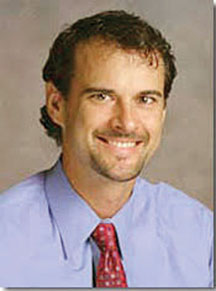Dr. Magryta: Empathy vs sympathy vs compassion
Published 12:00 am Sunday, June 23, 2019

Dr. Magryta
Let us look at the principles of being present in the moment with another during the healing process. What is the difference between empathy, sympathy and compassion?
According to the Chopra center (https://chopra.com/articles/whats-the-difference-between-empathy-sympathy-and-compassion):
Empathy — Empathy is viscerally feeling what another feels. Thanks to what researchers have deemed “mirror neurons,” empathy may arise automatically when you witness someone in pain. For example, if you saw me slam a car door on my fingers, you may feel pain in your fingers as well, meaning your mirror neurons have kicked in.
You may not always automatically feel how another is feeling, and that’s when you need to rely on your imagination. You’ve heard the phrase, “Put yourself in someone else’s shoes.” That’s the other route to being an empathetic person.
Sympathy — It’s not easy to differentiate between sympathy and empathy. The main difference is that when you have sympathy, you are not experiencing another’s feeling. Instead, you are able to understand what the person is feeling. For example, if someone’s father has passed away, you may not be able to viscerally feel that person’s pain. However, you can employ your cognitive skills to understand that your friend is sad.
It makes sense, then, to send sympathy cards when you understand that someone is suffering. You are not feeling that person’s pain, but you want them to know you are aware of their suffering.
Compassion — Compassion takes empathy and sympathy a step further. When you are compassionate, you feel the pain of another (empathy) or you recognize that the person is in pain (sympathy), and then you do your best to alleviate the person’s suffering from that situation.
At its Latin roots,compassion means “to suffer with.” When you’re compassionate, you’re not running away from suffering, you’re not feeling overwhelmed by suffering, and you’re not pretending the suffering doesn’t exist. When you are practicing compassion, you can stay present with suffering.
According to Thupten Jinpa, PhD, the Dalai Lama’s principal English translator and author of the course Compassion Cultivation Training (CCT), compassion is a four step process:
1. Awareness of suffering.
2. Sympathetic concern related to being emotionally moved by suffering.
3. Wish to see the relief of that suffering.
4. Responsiveness or readiness to help relieve that suffering.
Because of the above four steps, participants of CCT first learn about and practice mindfulness. This makes sense because you aren’t able to notice other people’s suffering unless you are in the present moment.
The simple act of listening with your full presence can be one of the most compassionate acts you can offer. Unfortunately, compassionate listening has become increasingly rare as technology and busy lives pull your attention away.
An important distinction between feeling empathy and compassion is how they affect your overall well-being. If you are frequently feeling the pain of another, you may experience overwhelm or burnout. This is a common problem for caregivers and health care providers, and it’s been labeled “empathy fatigue.”
Compassion, however, is a renewable resource. When you have the ability to feel empathy for the other person but then extend a hand to alleviate someone’s pain, you are less likely to burn out.
Research indicates that compassion and empathy employ different regions of the brain and that compassion can combat empathetic distress.
Think of movies like the Green Mile Link where John Coffey takes away the pain of others at his own expense. While this is ultra empathy, it is not realistic, nor should it be. For healers in medicine, to give of self at this level is to provoke burnout very rapidly.
Compassion is the key to effective long term healing. We are at out best when we understand when a person suffers, witness it and offer our support. As with a child, we are not there to fix every problem. We are present to love them through their own growth in the thick of the problem. This is the same for parents, friends and all relationships.
The biggest mistake that I see repeated in this life is the desire of a sufferer to want someone to take away their problem. Then the person tries to do just that, stalling the growth and emancipation of the sufferer to heal. We all need to grow on our own at all ages and at all times.
Please do try really hard to be compassionate with your child, and ove them, but do not fix the problem lest you stall their growth.
Dr. M
Dr. Chris Magryta is a physician at Salisbury Pediatric Associates. Contact him at newsletter@salisburypediatrics.com


